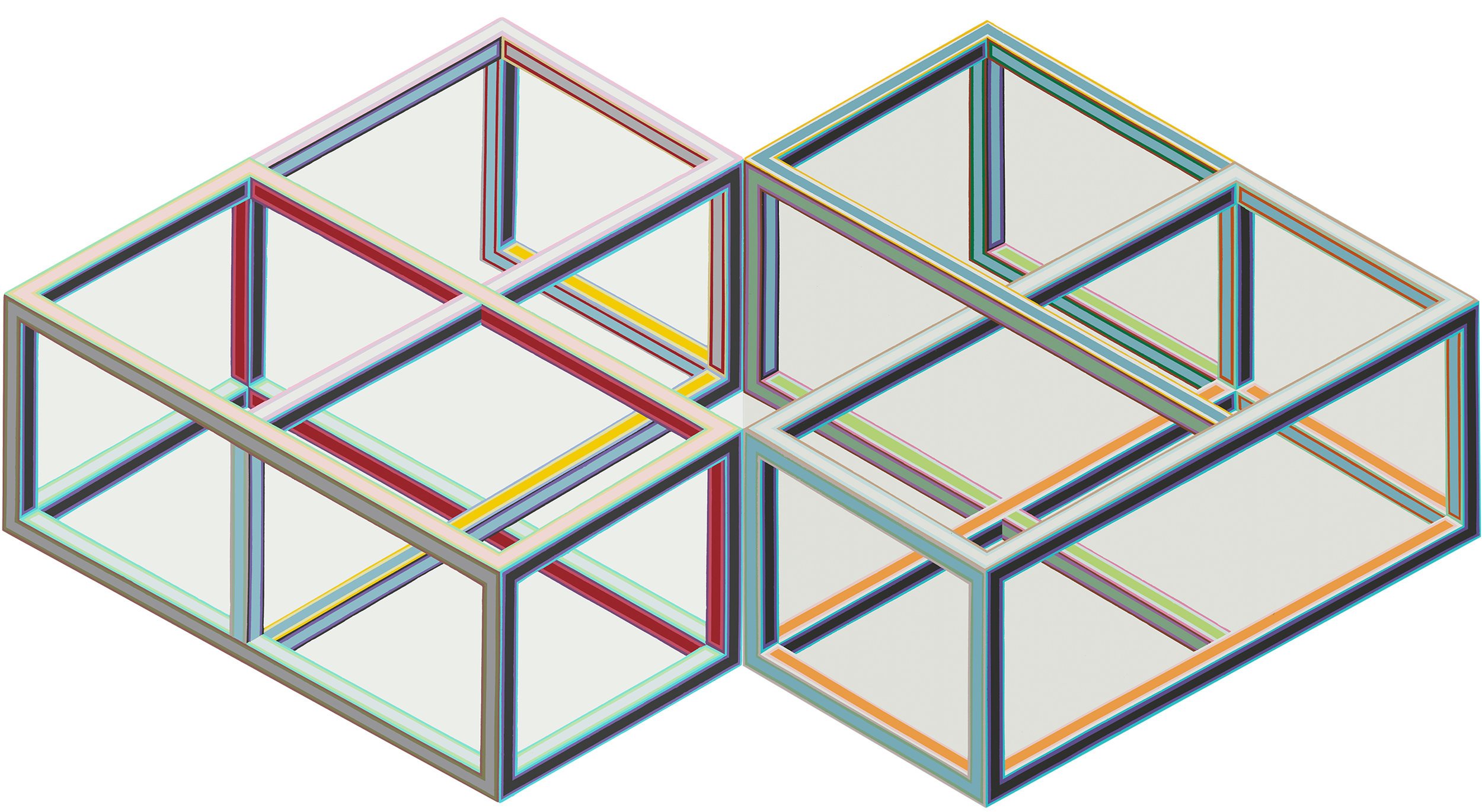Al Loving
Photograph Source
From Artist’s Website
Born in Detroit in 1935, Al Loving studied painting at the University of Michigan, Ann Arbor. In 1968, Loving relocated to New York, where he found himself among a social milieu which included artists Robert Duran, Alan Shields, Howardena Pindell, Richard Van Buren, and the dancer and choreographer Batya Zamir. A year later, in 1969, Loving famously became the first African-American to have a one-person show at the Whitney Museum of American Art.
Unlike many African-American artists whose art focused on the racial politics of the era, Loving was a staunch abstractionist. His early works were built upon strict yet simple geometric shapes—often hexagonal or cubic modules. Inspired by Hans Hoffmann (who taught Loving’s mentor Al Mullen), Loving concentrated on the tension between flatness and spatial illusionism. In the 1970s the artist became disenchanted with his earlier, hard-edge geometric paintings. Loving dispensed with notions of centralized composition, figure/ground separation, and pictorial frame in his later torn canvas and collaged paper works. He combined hundreds of pieces of cut and torn canvas or paper into an abundance of overlapping patterns and shapes, their rich and intuitive array of colors stretch irregularly, spiraling outward, surrounding the space, and engulfing the viewer.
Throughout his career, Loving had solo exhibitions at many well-known institutions, including: Gertrude Kasle Gallery (1969, 1970, Detroit), William Zierler, Inc. (1971, 1972, 1973, New York), Fischbach Gallery (1974, 1976, New York), The Studio Museum in Harlem (1977, 1986, New York), Diane Brewer Gallery (1980, 1983, New York), June Kelly Gallery (1988, 1990, 1992, New York), the Neuberger Museum of Art (1998, Purchase, New York), and Kenkeleba House (2005, New York). His work was also featured in many important group exhibitions, such as L’art vivant aux États-Unis (1970, Fondation Maeght, Saint-Paul, France), Contemporary Black Artists in America (1971, Whitney Museum of American Art), Lamp Black: Afro-American Artists, New York and Boston (1973, Museum of Fine Arts, Boston), Another Generation (1979, The Studio Museum in Harlem, New York), Afro-American Abstraction (1981, P.S. 1 Contemporary Art Center, Queens), and The Appropriate Object (1989, Albright-Knox Art Gallery, Buffalo), among others. Most recently, Loving’s work appeared in High Times, Hard Times: New York Painting, 1967–1975 (2006, Weatherspoon Art Museum, University of North Carolina, Greensboro), Target Practice: Painting Under Attack, 1949–1978 (2009, Seattle Art Museum), America is Hard to See (2015, Whitney Museum of American Art), and Marrakech Biennale 6 (2016, Morocco).
Loving’s work is featured in the collections of major museums around the country, including: Crystal Bridges Museum of American Art, Bentonville, Arkansas; the Detroit Institute of Arts; the Empire State Plaza Art Collection; the Metropolitan Museum of Art; the Museum of Fine Arts, Boston; the Museum of Modern Art; the National Gallery of Art, Washington, D.C.; the Pérez Art Museum Miami; the Pennsylvania Academy of the Fine Arts, Philadelphia; the Philadelphia Museum of Art; the Rose Art Museum, Brandeis University, Waltham, Massachusetts; The Studio Museum in Harlem; the Walker Art Center, Minneapolis; and the Whitney Museum of American Art.


